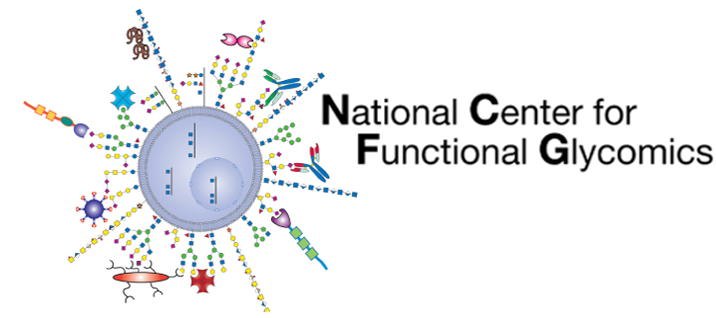By: Richard D. Cummings
L-Ascorbic acid, vitamin C, is termed a ‘sugar acid’ or ‘acidic sugar’, and is a derivative of glucose with a carboxyl group at C1 (1). In mammals, UDP-glucuronic acid is the source of D-glucuronic acid, the precursor to vitamin C (2). Vitamin C is sometimes referred to as a monosaccharide, although it is neither an aldose or ketose, and thus is technically is not a monosaccharide. In reference to L-ascorbic acid as a sugar acid, there are many types of sugar acids, and some, such as glucuronate and iduronate are monosaccharides, but others are not, such as gluconic acid and xylonic acid. Sialic acid and KDO (3-deoxy-D-manno-oct-2-ulosonic acid) are monosaccharides, and are also sometimes referred to as sugar acids.
Most mammals, except for humans (anthropoid primates), bats, and guinea pigs, are able to synthesize vitamin C. Interestingly, lemurs in the strepsirrhine suborder of primates (‘bent-nosed’ primates’) can synthesize vitamin C (3). Mammals not able to synthesize vitamin C have a mutation in the GLO gene, which encodes L-gulono-γ-lactone oxidase. This enzyme catalyzes the last step of vitamin C biosynthesis (1), the conversion of L-gulono-1,4-lactone to L-ascorbic acid. The mutations in GLO appeared over 60 million years ago. Deficiencies of vitamin C in the diet of humans is the cause of scurvy (4). Interestingly, plants synthesize vitamin C by an entirely different pathway, termed the “D-mannose/L-galactose pathway” or “Smirnoff-Wheeler pathway” (5). It uses GDP-D-mannose and the entire pathway results in a series of products, e.g., GDP-L-galactose, L-galactose, and L-galactono-1,4-lactone. The conversion of the latter to L-ascorbic acid is catalyzed by a mitochondrial L-galactono-1,4-lactone dehydrogenase, which is located on the inner mitochondrial membrane and uses cytochrome c as the electron acceptor (6).
References:
- Drouin, G., Godin, J. R., and Page, B. (2011) The genetics of vitamin C loss in vertebrates. Curr Genomics 12, 371-378
- Linster, C. L., and Van Schaftingen, E. (2007) Vitamin C. Biosynthesis, recycling and degradation in mammals. FEBS J 274, 1-22
- Pollock, J. I., and Mullin, R. J. (1987) Vitamin C biosynthesis in prosimians: evidence for the anthropoid affinity of Tarsius. Am J Phys Anthropol 73, 65-70
- Stone, I. (1979) Homo sapiens ascorbicus, a biochemically corrected robust human mutant. Med Hypotheses 5, 711-721
- Smirnoff, N., Conklin, P. L., and Loewus, F. A. (2001) BIOSYNTHESIS OF ASCORBIC ACID IN PLANTS: A Renaissance. Annu Rev Plant Physiol Plant Mol Biol 52, 437-467
- Smirnoff, N. (2001) L-ascorbic acid biosynthesis. Vitam Horm 61, 241-266
